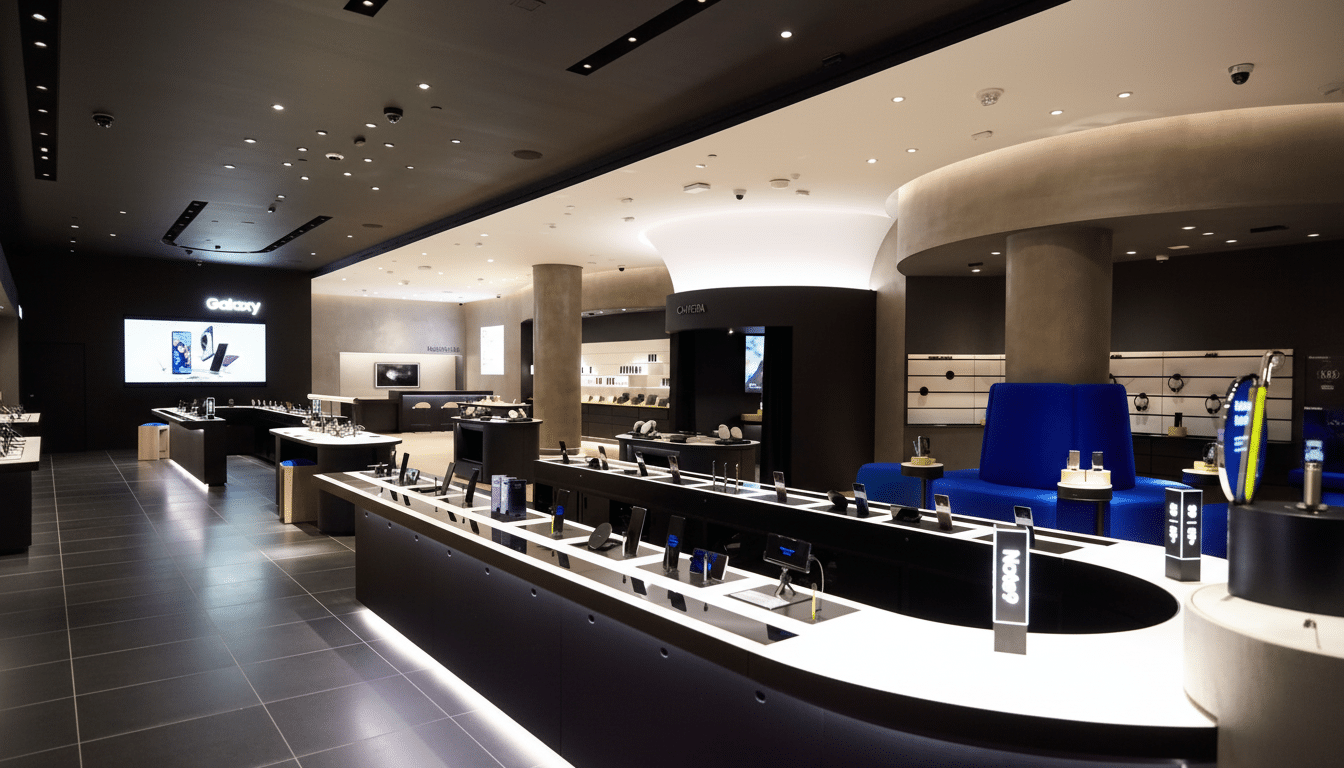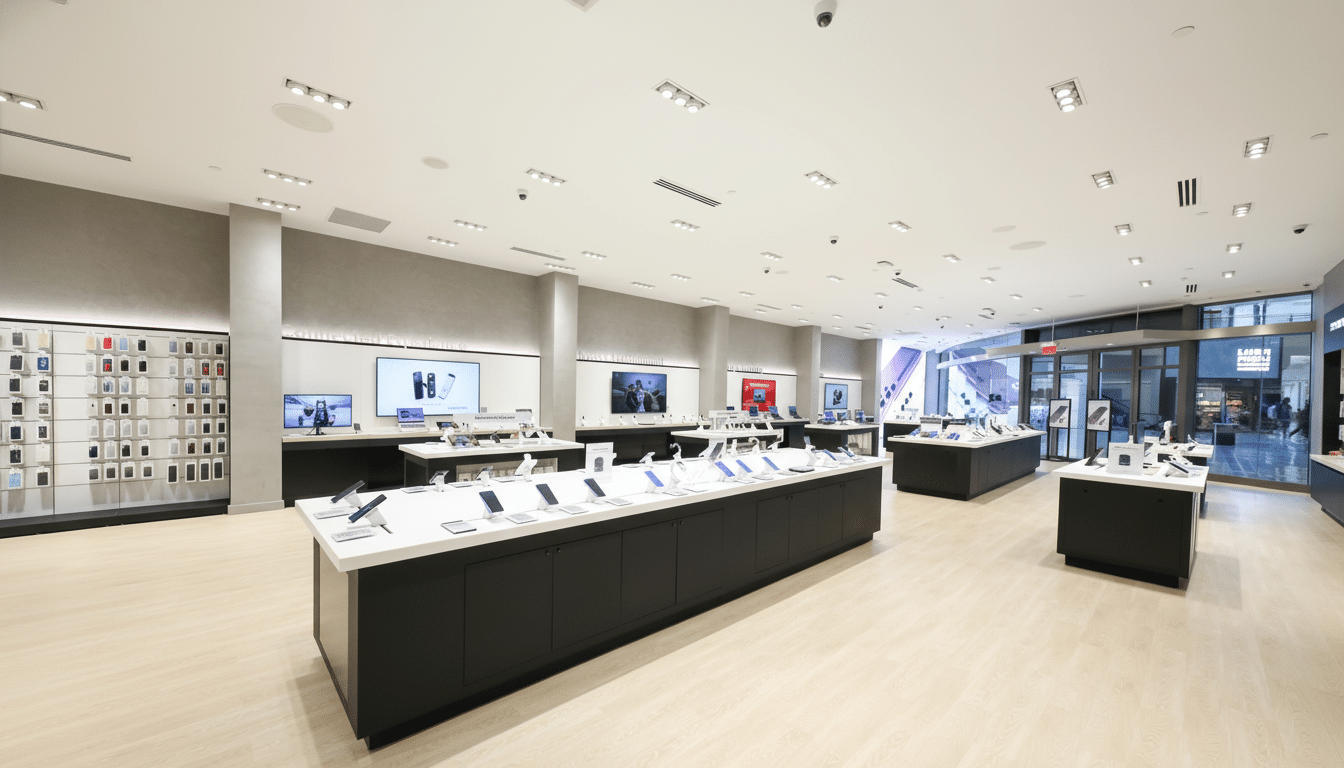Three additional Experience Stores are opening in the U.S., offering a testing ground for the latest Galaxy phones, foldables, wearables, and audio gear; help through Samsung Care services; and access to hands-on classes that demystify Galaxy AI features. The move highlights a growing wager on experiential retail — meeting consumers where they already shop and allowing them to touch shiny new gadgets before they make a purchase.
Where the new stores are located in the United States
The new outlets are coming to three heavily trafficked malls: Queens Center in Elmhurst, N.Y.; Mall of America in Bloomington, Minn.; and Los Cerritos Center, which is located between Los Angeles County and Orange County. Listings in the malls’ directories confirm the locations, with the two Midwest and New York stores listed as opening first and Cerritos at a later date.

These are precisely the sort of locations that can make or break discovery. The Mall of America says it gets about 40 million visits a year, and Queens Center and Los Cerritos Center are consistently among the most popular shopping centers in their trade areas, according to property managers and retail analytics firms. For a company that feeds on hands-on demos — foldables, stylus input, camera tests — footfall is critical.
What to do in the stores and available services
The Experience Stores are designed for trying real-life scenarios, past browsing the S10’s featherweight hardware: unfold a Galaxy device to try different multitasking layouts from powering it on to shutting it down; pair Buds with noise control switched off and on; try out camera modes under various lighting.
Staff members offer short workshops for walking people through Galaxy AI tools, such as live translation and transcription, and photo remastering and generative editing, with advice on how to protect one’s privacy and battery.
Samsung Care is also a given. Anticipate in-person consultations, device installs and transfers, as well as advice on repair options. For lots of shoppers, being able to troubleshoot problems and consider upgrades in one spot is more comforting than mailing off a device or dealing with chat support.
Opening specials to look for at the new locations
Throughout the launch window, Samsung is also advertising grand opening offers at specific new stores for a limited time. Early birds can look forward to ballooned trade-in values for select smartphones and a headline deal on the Galaxy Buds 3 at $99.99, considerably less than their standard cost of $179.99. Quantities are limited at each location and may vary by store, so you’re well served to check with the specific mall listing or store team before you hit the road.

Trade-in boosters are now a reliable hack to bring down the costs of upgrading for owners of top-end phones. In reality, the maximum value usually kicks in when you trade in a recent flagship in good condition — older phones can still qualify for lesser amounts, but there are tiers for your credit. Staff can appraise devices on the spot and provide an estimate for out-the-door pricing with accessories and protection plans.
Why Physical Stores Are Still Important For Gadgets
Consumer electronics is one of the few categories in which trying before buying has a quantifiable impact on conversions. Retail industry groups like the National Retail Federation and ICSC, meanwhile, have time and again found that most of the U.S. retail sales are transacted in physical stores, and immersive environments tend to lift attachment rates on add-ons like earbuds, cases, chargers, and more.
For Samsung, categories like foldables that are driven by demos benefit most from in-person instruction. A lot of shoppers want to experience hinge durability, crease visibility, and app continuity for themselves. Similarly, Galaxy AI bells ring louder when someone shows how real-time translation can deal with accents or how on-device summarization operates offline.
Strategy and competitive context for Samsung retail
Since first introducing Experience Store concepts alongside the first-generation Galaxy Z Fold and the Galaxy S10 era, Samsung has been perfecting its retail formula. Some flagship showcases have shut since then — among them a popular experience space in Manhattan — while the company intensified its focus on high-traffic mall footprints and service-centric hubs.
Company leaders have stressed that the aim isn’t to open a store, but rather to engage one-on-one with people where they already are, alongside experts who will be available to tailor demos and support. It is also a practical response to rivals: Apple has grown up; its now-sprawling storefront network sets the bar high; Google has emphasized a smaller number of showcase locations; many traditional electronics chains are narrowing their footprint. Samsung’s approach navigates the course by supplementing shallow experiential zones with repair, setup, and education.
Bottom line: With the three Experience Stores, Samsung is constantly creating more opportunities to put a device in someone’s hand, answering questions on the spot, and converting curiosity into ownership — particularly when AI-enabled features and foldable hardware become differentiating factors you have to feel, not just hear about.

